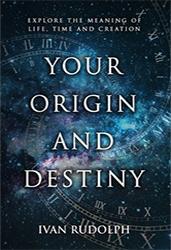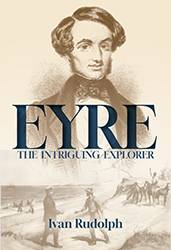How might Eyre’s insights help Aborigines today?
It is encouraging that in Eyre’s opinion, none of the cultural weaknesses that might otherwise inhibit Aboriginal progress were irreversible.
He hoped education would be the main key to unlock their future, as it has proved to be with other indigenous people within the former British Empire, but he soon found out this was not proving to be the case. Eyre was a friend of Moorhouse and of certain missionaries who were attempting to educate Aboriginal children, but were finding attendance at school too irregular for real progress to be made. The underlying cause was lack of support from peers, parents and the tribe in general. Eyre tells us, “I have myself, upon going round the encampments in Adelaide by night, seen the school-children ridiculed by the elder boys, and induced to join them in making a jest of what they had been taught during the day.”
Even today, irregular attendance at school and negative attitudes to education within parts of the indigenous community remain problems.
To reverse poor attendance, Eyre rejected a punitive approach, which would only reinforce a negative parental perception of schooling and be counter-productive. Instead he suggested that parents should be given rewards to willingly send their children to school. This would generate a positive view towards education in the home.
Eyre visited each of the schools that began under Grey’s patronage and spoke to the missionary teachers. In each case the best students soon drifted back to their tribal lifestyles. Eyre perceived that a clear supported career path needed to be planned for Aborigines after leaving school that would incorporate them into the wider community. These needs were not being met and “they consequently relapse into a state of hopeless passive indifference.”
However, there were encouraging exceptions. Moorhouse told him that some Aborigines enjoyed work in the trades and showed great promise. (In 1846, Moorhouse reported that “Four boys are employed in the government workshops – two as blacksmiths, and two as carpenters; two are engaged at Mr Peacock’s tannery, two are messengers at the Private Secretary’s office and two are bricklayer’s labourers.”)
Eyre’s own extensive experience had demonstrated that the indigenous people were as apt and intelligent as any other race. He mentioned also that there were “many instances on record, of the quickness with which natives have learned our language, or the facility with which temporarily they have accommodated themselves to our habits and customs.”
Why, then, were they choosing not to become part of the wider world?
One reason was unequal treatment. The help provided by Aborigines had proven invaluable earlier when Adelaide was first being established, but they soon noticed they were frequently looked down upon and seldom received fair reward for their input, and consequently lost all desire to work for colonials.
But there was a still deeper reason. Eyre quoted Grey’s compelling analysis:
The officers of the Beagle took away with them a native of the name of Miago, who remained absent with them for several months. I saw him on the North-West coast, on board the Beagle, apparently perfectly civilized; he waited at the gun-room mess, was temperate (never tasting spirits), attentive, cheerful, and remarkably clean in his person.
The next time I saw him was at Swan River, where he had been left on the return of the Beagle. He was then again a savage, almost naked, painted all over, and had been concerned in several murders. Several persons here told me, “You see, the taste for a savage life was strong in him and he took to the bush again directly.”
Let us pause for a moment and consider.
Miago, when he was landed, had amongst the white people none who would be truly friends of his. They would give him scraps from their table, but the very outcasts of the whites would not have treated him as an equal: they had no sympathy with him, he could not have married a white woman, he had no certain means of subsistence open to him, he never could have been either a husband or a father if he had lived apart from his own people. Where, amongst the whites, was he to find one who would have filled for him the place of his black mother, whom he is much attached to? What white man would have been his brother? What white woman his sister? He had two courses left open to him, he could either have renounced all natural ties and have led a hopeless, joyless life amongst the whites, ever a servant, ever an inferior being; or he could renounce civilization and return to the friends of his childhood, and to the habits of his youth. He chose the latter course, and I think that I should have done the same.
In Eyre’s day the white world was too colonial, and most people too insular, to welcome and even embrace other cultures and races. But today’s Global Village has opened up a new level of acceptance of other peoples and cultures undreamt of until recent years. Hopefully the society of the modern world, including large portions of Australian society, will progressively welcome Aborigines into their midst as equals, friends and family, and vice versa.
Happily the situation improves each year and it is obvious where the future lies.
Incidentally, it is too simplistic to view “white Australia” as a unified block and forget that it too has to make compromises to weld together a very diverse immigrant population. This remains an ongoing process in what some claim to be the most multi-cultural nation on earth. Breaking down barriers between heterogeneous peoples takes time and is helped by living and working in proximity, mixing socially, playing sport and other shared activities, and by education. Today, sadly, numerous Aborigines have withdrawn from this difficult but rewarding process and too many live far away in isolating communities.



